It is May 1991.
Western diplomatic services do not react to the early warning signs of war and do not understand that the situation is getting worse and worse [you can listen to the latest episode of BarBalkans - Podcast here].
After the first clashes between the Serbo-Croatian rebels and the Croatian police officers in Krajina at the end of March, Slavonia is the space of increasingly bloody battles [March ‘91. Bloody spring].
In the meantime, the two parties are fighting another battle through the referenda for independence.
Croatia from Yugoslavia.
SAO Krajina from Croatia.
Borovo Selo
In May, armed clashes and referenda are inextricably intertwined.
It has long been known that Zagreb will hold a referendum for the independence from the Federal Socialist Republic of Yugoslavia, following the Slovenian example [The pilot episode].
May 19 is the day.
Serbian minorities in Croatia feel threatened and they already control entire territories of Krajina [February ‘91. A beginningless war].
At the same time, the Croatian authorities managed to maintain control of Slavonia for the moment, but tension is increasing.
The village of Pakrac experienced the first victims of (almost) war. In many other villages, the same events may happen at any moment.
For example, in a 5-thousand-inhabitants village, five kilometers away from the bridges on the Danube river.
Borovo Selo. A small village populated by peasants, carpenters and railway workers: full of poor local families and other migrants from Serbia and Bosnia (since the end of World War II).
Poor and uprooted people, a perfect mix for the escalation of ethnic tensions.
On one hand, the local extremist group of the Croatian Democratic Union (HDZ) is lead by two objectionable men: Gojko Sušak, financier of President Tuđman’s election campaign, and Branimir Glavaš, former author of war crimes against the Serbs.
On the other side, moderate Croats from Osijek (the neighboring town) try to mediate, starting from the mayor, Zlatko Kramarič, and the Chief of police, Josip Reihl-Kir.
With such a political scenario, as often happens, extremists create damages that moderates cannot contain in any way. This is what happens in Borovo Selo.
One day, some HDZ militants, led by Sušak, fire three anti-tank rockets on the village, destroying a Serbo-Croat house.
The Chief of police already knows that the situation is out of control: «They are crazy», he complains to the mayor.
This is not enough.
Borovo Selo has been granted a sort of “special status”: no Croatian police officer can enter the village without explicit authorization from the citizens.
But on the night of May 1, four policemen cross an unguarded barricade and try to raise the Croatian sails with the šahovnica (the historical coat of arms) and replace the Yugoslavian flag.
The Serbo-Croats open fire: two policemen are injured and captured, the other two manage to escape.
The following morning, the leaders of the revolt agree to hand over the two prisoners, on condition that the Croatian police officers personally go to take them back.
Twenty of them enter the village, all armed. It looks like a punitive expedition.
But also on the other side, the rebels are armed, thanks to the support of the military authorities in Belgrade. Otherwise, without support, it is unlikely that Thompson machine guns, a stock sent by the U.S. to Tito in 1948 (after the rupture with Stalin), can shoot in Borovo Selo.
This is the prelude to the events of May 2.
The police contingent heads towards the center of the village, finding no opposition. On the right are the houses, on the left a brewery and a pizzeria.
Suddenly, all hell breaks loose. A storm of bullets comes from everywhere, from the roofs and the gates.
This is the perfect ambush.
The death toll is 12 Croatian police officers and 3 Serbo-Croatian rebels.
As trophies, bullet-pierced and blood-stained cars are displayed outside the Borovo Selo police station.
Croatian anger
After the battle of Borovo Selo, Croats react in a vigorous way. And they play the game of President Franjo Tuđman.
On May 4, the 12 bodies are taken back, as well as the two hostages.
The chief surgeon of the military committee reports that there are signs of torture: «They stepped on the wounds, and crushed hands and feet».
Some corpses leave no room for doubt. One is headless, one is slaughtered and yet another has a smashed skull, with eyes dangling out of their sockets.
The images are crude and it takes two days to decide whether to release them.
In the end, the government gives consent.
Photographs of the massacre are aired in prime time during the Zagreb news.
Croats take to the streets to manifest their anger.
In particular in Split, where Tuđman has arrived to meet the mayors of the Dalmatian cities and to inaugurate the Croatian Airlines.
Here, anger for the deaths in Borovo Selo - which is geographically very far away, to be honest - beefs up another protest. For the siege of Kijevo.
Along the road between Split and Knin, Kijevo is an enclave within an enclave. A Croatian village surrounded by Serbo-Croatian neighbors. Which are a minority in Croatia.
Between the end of April and the beginning of May, Chetnik militias cut off Croatian supplies to the town, with the support of the Yugoslav People’s Army (JNA) troops, led by the Bosnian Serb colonel-general Ratko Mladić.
The old “surrender or starve” strategy.
There is no electricity, water is drawn from a well, the civil and the land registries are requisitioned by the military, in order to cancel the Croatian presence from the village.
Even if the (first) blockade is lifted in mid-May, in Kijevo the alliance between the federal army and the Chetnik militias is welded on the ground.

The ballot war
Before the official start of the Yugoslav Wars in June, the Croatian authorities and the Serbo-Croatian rebels fight on a different battle space (in addition to the clashes in small villages). To be precise, in the voting booths.
May 19 is the date set for the referendum on “sovereign and independent Croatia”.
As expected, it is a plebiscite. The turnout is more than 80%, and over 9 out of 10 of voters are in favor.
Tuđman proudly declares: «The will of the people is to be accomplished».
Meanwhile, in Krajina the Serbo-Croatian people express a different will.
On May 12 in Knin, in the Dalmatian hinterland, the Republic of Serbian Krajina (SAO Krajina) is proclaimed.
This announcement followed the outcome of a popular referendum. On the same day the ballot reported the following question:
Are you in favor or against the unification of Krajina and Serbia, to remain in Yugoslavia with the inhabitants of Serbia, Montenegro and with the other peoples who want to stay in Yugoslavia?
99.8% of the voters are in favor.
After placing the voting card in the ballot box, Milan Babić - the future President of SAO Krajina - declares: «Serbia goes from Knin to Bulgaria and today we are in Serbia».
With “Serbia” - by now we know - he means the Greater Serbia.
The mayor of another village, Benkovac, claims that the Croatian shops’ windows have been shattered by the Croats themselves, «to discredit us».
Everyone is arguing with slogans, hatred and for conflict.
War is coming.
If you liked this article, you can spread this parallel journey and the free weekly newsletter on social media:
You can also give a gift subscription to whoever you want. Don’t let this virtual trip to the Balkans get lost!
Here is the archive of BarBalkans - Podcast:












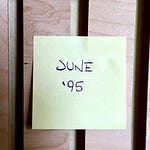
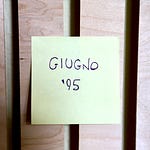
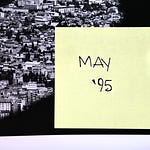
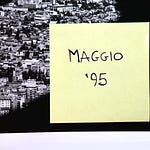

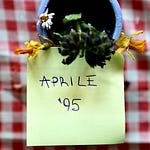
Share this post